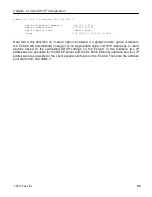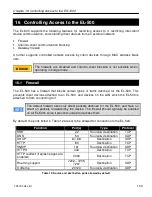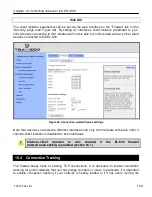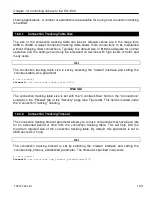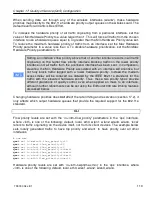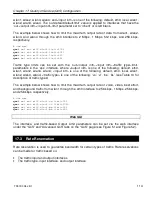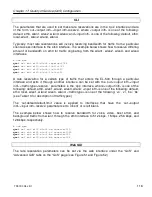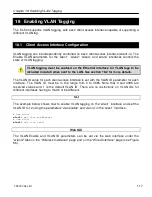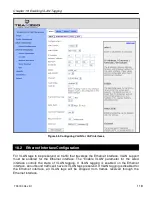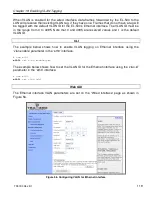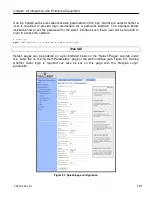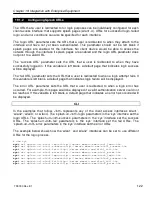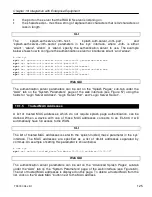
Chapter 17: Quality of Service (QoS) Configuration
TR0190 Rev. B1
110
When sending data out through any of the wireless interfaces (wlan
N
), these hardware
priorities map directly to the 802.11e hardware priority output queues on the wireless card. The
default level for all traffic is Best Effort.
To increase the hardware priority of all traffic originating from a particular interface, set the
value of Min Hardware Priority to a value larger than 1. This will force all traffic from the chosen
interface to use a hardware queue equal to or greater than the Min Hardware Priority value set.
To reduce the maximum hardware priority of traffic from an interface, set the Max Hardware
Priority parameter to a value less than 4. To disable hardware prioritization, set the Min/Max
Hardware Priority parameters to ‘0’.
Setting an interface’s flow priority above that of another interface results in all traffic
originating on the higher flow priority interface blocking traffic on the lower priority
interface until all traffic from the prioritized interface has been sent. In comparison,
elevating the Min Hardware Priority associated with an interface will prioritize, but
not fully block traffic tagged with a lower hardware priority. Instead the medium
access delay will be reduced (as dictated by the IEEE 802.11e standard) for the
traffic with the elevated hardware priority. Thus, these two priority types provide
different gradations of quality control, even when applied en mass to an interface,
although further refinements can be set using the EnRoute1000 rate limiting features
discussed below.
Changing hardware priorities does
not
affect the rate limiting and reservation (section 17.2), it
only affects which output hardware queues that provide the required support for the 802.11e
standard.
CLI
Flow priority levels are set with the ‘in.<intf>.flow_priority’ parameters in the ‘qos’ interface,
where <intf> is one of the following: default, local, eth0, wlan1, wlan2, wlan3, wlan4. ‘local’
refers to traffic originating on the device itself, not from its client devices. The example below
sets locally generated traffic to have top priority and wlan1 to have priority over all other
interfaces.
>
use qos
qos>
set in.default.flow_priority=10
qos>
set in.local.flow_priority=90
qos>
set in.wlan1.flow_priority=20
qos>
set in.wlan2.flow_priority=inherit
qos>
set in.wlan3.flow_priority=inherit
qos>
set in.wlan4.flow_priority=inherit
qos>
set in.eth0.flow_priority=inherit
Hardware priority levels are set with ‘in.<intf>.hwpri{max,min}’ in the ‘qos’ interface, where
<intf> is one of the following: default, local, eth0, wlan1, wlan2, wlan3, wlan4.
Summary of Contents for EL-500
Page 20: ...Chapter 3 Using the Web Interface TR0190 Rev B1 20 Figure 8 Rebooting the EL 500...
Page 68: ...Chapter 11 Ethernet Interface Configuration TR0190 Rev B1 68 Figure 38 Wired DHCP settings...
Page 108: ...Chapter 16 Controlling Access to the ER 1000 TR0190 Rev B1 108 Figure 50 VAP ACL configuration...

